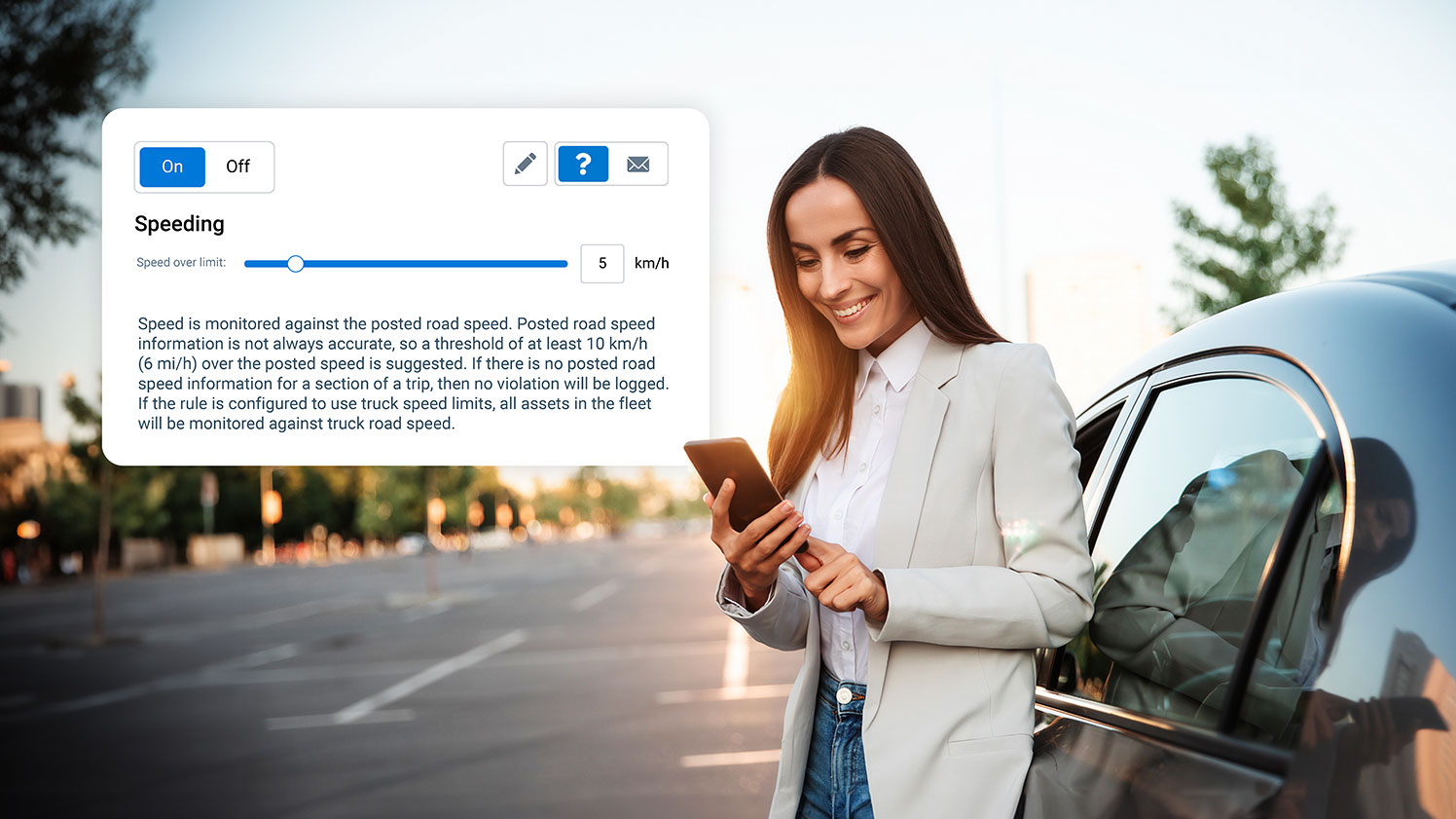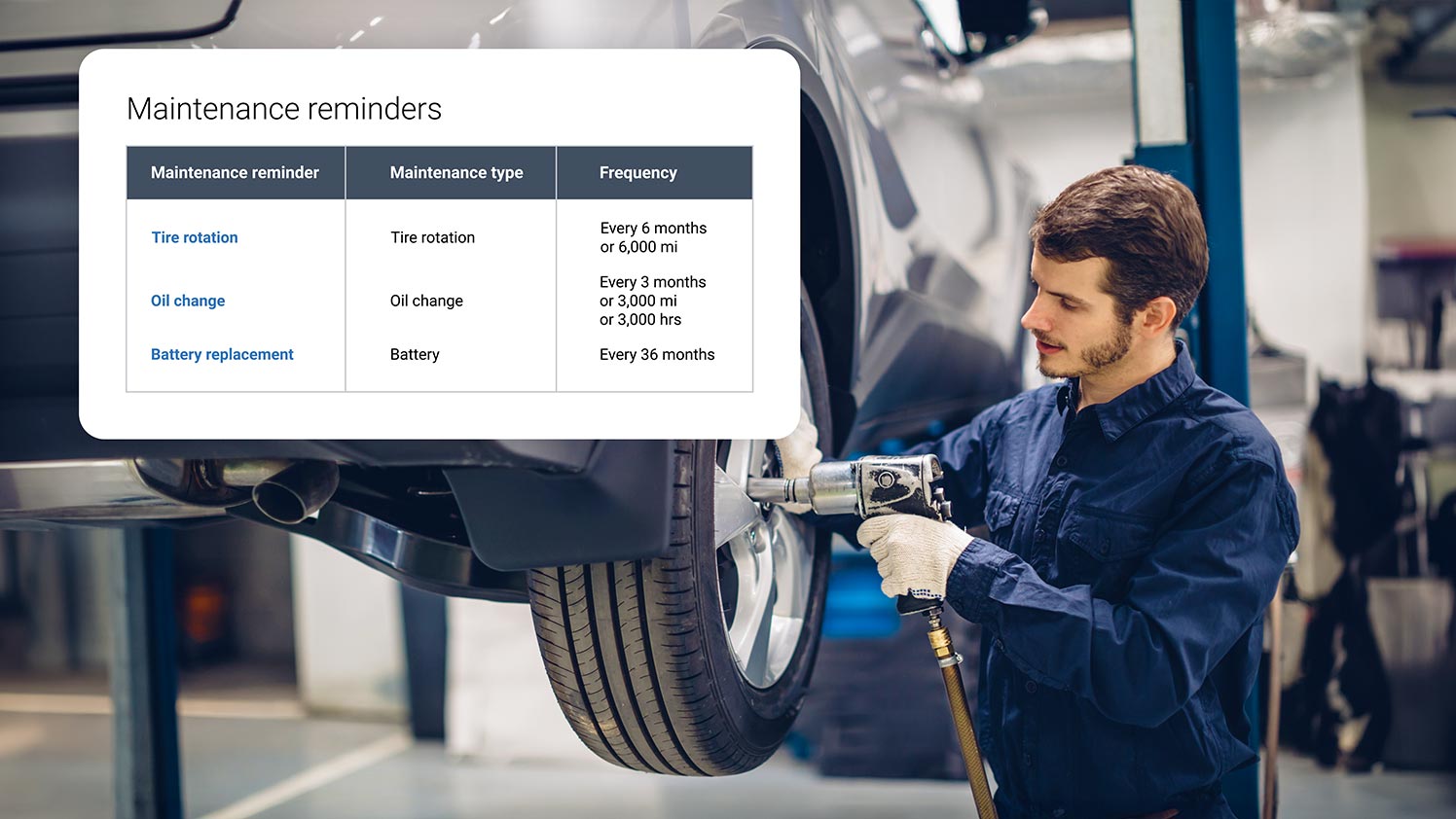Module VI – Step by step: Creating your fleet safety program
On the road to safety, following the rules is just the starting point. Safe government fleets must excel at reducing driving risks.
A fleet safety program is more than just a set of rules; it's a comprehensive approach to minimizing risks, improving driver behavior and fostering a culture of safety within your organization. As a roadmap to achieving your safety goals, it shows the route to:
- Protecting your most valuable assets: Your drivers and vehicles are the backbone of your operations. A strong safety program helps safeguard them from collisions and injuries.
- Reducing costs: Collisions are expensive, leading to repairs, legal fees and increased insurance premiums. A proactive safety program can help mitigate these costs.
- Improving productivity: A safe fleet is a productive fleet. By minimizing downtime and promoting responsible driving, you can keep your vehicles on the road and better serve your community.
- Building public trust: Demonstrating a commitment to safety enhances your agency's reputation and builds trust with the public you serve.
The road to safety is a journey, not a destination. By following this roadmap and making safety a core value, you can navigate the challenges and reap the rewards of a truly safe and successful fleet.
Now, let's dive into the steps involved in building a best-in-class fleet safety program.
Step 1: Set up a fleet safety council
A fleet safety council is a committee of employees who are responsible for overseeing the fleet safety program. The council should be made up of representatives from different departments, including management, drivers and safety personnel.
The responsibilities of the fleet safety council include:
- Developing and implementing safety policies
- Conducting regular safety audits
- Investigating collisions and incidents
- Providing safety training to employees
- Promoting a culture of safety within the company


Step 2: Create fleet safety goals
To track the progress of your fleet safety program, it is important to create fleet safety goals. These goals should be measurable KPIs that you can track over time.
Some examples of fleet safety goals include:
- Reducing the number of collisions per year
- Decreasing the number of speeding violations
- Improving driver safety scores
- Increasing the percentage of drivers who complete safety training
Step 3: Establish clear driver rules and regulations
The foundation of any successful fleet safety program is a clear safety policy and set of driver rules and regulations. These rules should cover all aspects of safe driving, including:
- Speeding: Set clear speed limits and emphasize the importance of adhering to them.
- Distracted driving: Prohibit the use of cell phones and other electronic devices while driving.
- Impaired driving: Strictly prohibit driving under the influence of alcohol or drugs.
- Fatigue: Educate drivers on the dangers of drowsy driving and encourage them to take breaks when needed.
- Vehicle maintenance: Require drivers to perform regular vehicle inspections and report any maintenance issues.
- Defensive driving: Train drivers on defensive driving techniques to help them avoid safety incidents.
Regularly review and update your safety policies and procedures to make sure they align with best practices and evolving regulations. This demonstrates your commitment to staying ahead of the curve in safety management.


Step 4: Identify and screen all drivers
Before allowing anyone to drive a company vehicle, it is important to properly identify and screen them. This includes:
- Verifying their driver's license: Make sure their license is valid and that they have a clean driving record.
- Conducting a background check: This will help you identify any potential red flags, such as a history of DUIs or reckless driving.
Step 5: Train drivers on best safety practices
Once drivers have been identified and screened, it is important to provide them with training on best safety practices. This training should cover:
- Company safety policies: Make sure drivers are familiar with all of the company's safety rules and regulations.
- Defensive driving techniques: Teach drivers how to avoid collisions by anticipating and reacting to potential hazards.
- Vehicle maintenance: Educate drivers on how to properly inspect and maintain their vehicles.
- Emergency procedures: Train drivers on what to do in the event of a collision or breakdown.

Step 6: Monitor and measure driver behavior
Monitoring and measuring driver behavior is essential for improving fleet safety and efficiency. Advancements in technology have given fleets access to extensive real-world data about driving behavior and making it easy to understand what the data means. Implementing a driver monitoring system can help identify risky driving habits, such as speeding, harsh braking, and distracted driving. This data can be used to provide targeted coaching and training to drivers, improving their performance and reducing the likelihood of collisions.
For information on how best to monitor and measure driver behavior, see Module II – How do you measure fleet safety?
Did you know?
Geotab Drive is a driver app that allows drivers to see how their safety performance scores and quickly identify areas of improvement.
Step 7: Implement processes for improving driver behavior
To create a culture of safety, it is important to hold your team accountable for following the company's safety policies and encourage ongoing improvement. Therefore, once risky drivers have been identified, it's crucial to take proactive steps to improve their behavior and mitigate the risk of collisions.
Steps can include:
- Driver coaching
- Training programs
- Incentive programs
- Discipline
When used in isolation, these practices often provide only short-term improvements to driver behavior. To break this barrier and achieve continuous improvement, fleets are increasingly moving toward an integrated driver-empowerment approach to improving driver behavior. An example of this would be a driver app that offers personalized driving feedback, driver scores, coaching and more.

Did you know?
20% of drivers are responsible for close to 80% of crashes and violations, according to a study from the Federal Motor Carrier Safety Administration (FMCSA).

Step 8: Monitor compliance with fleet policy
Ensuring drivers adhere to company safety policies is crucial for maintaining a safe and efficient fleet. Leverage technology to monitor policy compliance through various methods, such as telematics rule violation alerts. These alerts notify safety managers when drivers violate predefined rules or thresholds, helping identify patterns of non-compliance and potential high-risk drivers. This proactive approach allows for timely intervention and targeted training to reinforce safe driving practices and mitigate potential risks.
Step 9: Set incident response procedures
Having a clear and comprehensive set of incident response procedures is crucial for effectively managing collisions or other unexpected events. These procedures should outline a step-by-step process that includes:
- Immediate actions: Guidance on securing the scene, enhancing safety, and providing necessary assistance.
- Reporting protocols: Clear instructions on how to report the incident, including who to contact and what information to provide.
- Documentation requirements: Specify the necessary documentation, such as incident reports, witness statements and photographic evidence.
- Post-incident procedures: Outline the steps for investigation, follow-up and any necessary corrective actions.


Step 10: Stay up-to-date on fleet maintenance
Regular and thorough fleet maintenance is essential for ensuring vehicle safety and reliability. Implement a proactive maintenance program that includes:
- Preventive maintenance: Establish a schedule for routine inspections, servicing, and preventative maintenance tasks.
- Timely repairs: Address any maintenance issues promptly to prevent escalation and maintain vehicle safety.
- Vehicle upkeep: Maintain vehicles in good condition, including cleanliness, tire pressure checks and fluid level monitoring.
Become fleet safety certified
To demonstrate your commitment to fleet safety, consider becoming fleet safety certified. There are a number of different fleet safety certifications available, such as the Certified Safety Supervisor designation offered by the North American Transportation Management Institute.
Invest in advanced fleet safety technology
Investing in advanced fleet safety technology can significantly enhance your fleet's safety and efficiency. Collision avoidance systems, lane departure warnings and driver monitoring systems can help prevent incidents and protect your drivers.
Additionally, telematics and camera systems can provide valuable data and insights to improve driver performance and optimize operations.To effectively incorporate fleet safety technology into your fleet safety program, you should consider the following activities.
To effectively incorporate this technology typically requires the following:
Driver buy-in and training
Provide comprehensive training on the benefits of these tools, emphasizing that they are designed to support drivers in maintaining safety and to enhance the drivers’ own safety, not to punish them. Address any concerns about data privacy transparently, ensuring drivers understand how data is used and protected.
Develop a data-driven culture
Encourage a culture of data-driven decision-making and continuous improvement, valuing data insights at every level of the organization. This means fostering an environment where data is not only collected but also actively used to inform decisions and drive positive change. By making data a central part of the organization's culture, you can empower employees to contribute to safety improvements and promote a continuous cycle of learning and adaptation.
Converse with stakeholders
By keeping stakeholders informed and engaged, you can foster a shared sense of ownership and commitment to safety. Communicate the goals and benefits of the technology to all stakeholders, including drivers, management and the public. Transparent and consistent communication is key. Actively solicit feedback from drivers and other stakeholders, addressing any concerns or questions they may have.
The importance of leadership
While data and technology are essential tools, a truly effective safety program requires strong leadership. When safety is a top priority for management, it permeates the entire organization. Leaders who champion safety initiatives, provide resources for training and recognize safe driving behaviors create a culture where safety is valued and practiced by everyone.
A comprehensive fleet safety program is a crucial component of any successful government fleet operation. By prioritizing safety, you not only protect your drivers and the public but also reduce costs, improve productivity and enhance your agency's reputation within the community.
By following the steps outlined in this module and making safety a core value, you can navigate the challenges and reap the rewards of a truly safe and successful fleet.